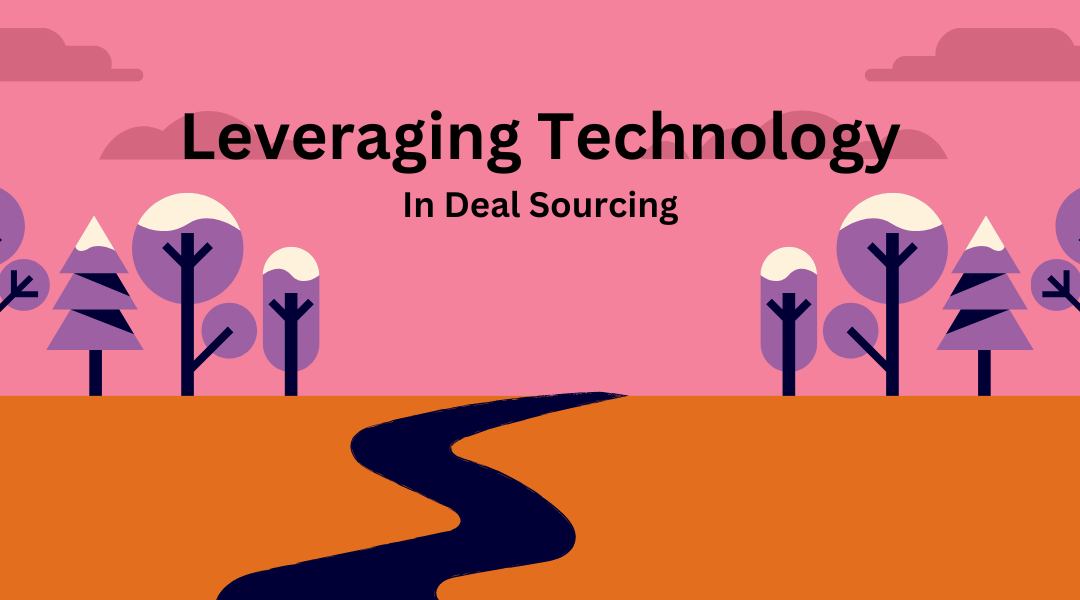In the fast-paced world of deal sourcing, the right technology can be the difference between success and missed opportunities. Whether you’re involved in mergers and acquisitions, debt, or equity deals, employing the right tech stack is crucial for efficiently identifying, nurturing, and closing deals. Here’s a breakdown of the key technologies and strategies that can streamline your deal sourcing process.
The Backbone: Customer Relationship Management (CRM)
A Customer Relationship Management (CRM) system is the cornerstone of deal sourcing. It enables firms to track interactions with potential clients, maintain detailed records of communications, and ensure that no opportunities slip through the cracks.
Key Features of a CRM:
- Contact Management: Centralizes information about contacts, including their roles, communication preferences, and relationship history.
- Collaboration: Facilitates the sharing of information across teams, ensuring everyone is on the same page.
- Lead Nurturing: Automates follow-ups and reminders, helping you stay engaged with potential clients over long periods.
Popular CRMs like Salesforce, Zoho, and HubSpot are widely used, but even simpler tools like Excel can be effective if utilized correctly. However, the key to a successful CRM implementation is consistency—every team member must use the system to its full potential, and standardizing processes across the firm can significantly enhance efficiency.
Intent-Based Deal Sourcing
Intent-based deal sourcing focuses on identifying companies that are likely to be involved in transactions soon. By tracking specific indicators, such as revenue milestones or industry trends, firms can proactively approach companies before they actively seek a buyer or investor.
Example of Intent-Based Sourcing:
If startups typically sell at $10 million in revenue, you could track companies nearing $8 million with a high growth rate. This allows you to approach them early, offering your advisory services just when they are considering a transaction.
Book Recommendation
Try reading Building a StoryBrand to help you think through the way you position your company to showcase the story that you help other brands achieve. Help customers engage with your company and story and show them how you can help them in their own story. Your tech stack supports this mission and helps you scale your sourcing efforts even more.
Utilizing Databases and Data Services
To find and connect with potential clients, leveraging specialized databases is essential. Tools like PitchBook, S&P Capital IQ (CapIQ), and other data services provide valuable insights into companies’ financials, market positions, and key contacts. Don’t forget that if it’s really popular, everyone else is using it and has access to the same data. That’s not bad, but it does mean the same route is getting hit by everyone so you’ll either need to come up with a strategy to deal with it.
How to Use Data Services:
- Identify Potential Deals: Use the data to track companies that fit your target profile.
- Obtain Contact Information: Ensure you’re reaching out to the right decision-makers.
- Understand Communication Preferences: Tailor your outreach based on how contacts prefer to communicate, whether it’s through email, phone, or another channel.
Matching Technology to Strategy
Your tech stack should align with your deal sourcing strategy. For example, if your strategy involves extensive email outreach, ensure you have a robust email system in place. Similarly, if market research is a core part of your approach, invest in tools that support data gathering and analysis.
The Importance of Follow-Up
Regardless of the technology you use, the core objective remains the same: follow-up. Technology helps you maintain relationships over time, ensuring that when the opportunity arises, you are the advisor of choice.
Follow-Up Essentials:
- Consistent Communication: Regular check-ins keep you top of mind with potential clients.
- Tailored Content: Offer insights and advice relevant to their specific needs and interests.
- Automated Reminders: Use CRM tools to set reminders for follow-ups, ensuring you never miss an opportunity.
Avoiding the Shotgun Approach
Without the proper technology and data tracking, you risk adopting a shotgun approach—scattering your efforts with little focus or direction. The goal of using technology in deal sourcing is to bring precision to your efforts. With data-driven insights, you can track where you are in the sales cycle, identify gaps in your pipeline, and ensure that every potential deal is approached strategically.
Technology in deal sourcing isn’t just about having the latest tools; it’s about using them effectively to enhance your firm’s strategy and processes. From CRM systems that manage relationships to data services that identify potential deals, the right technology can streamline your workflow and improve your chances of success.
Think critically about the tools you need, align them with your strategy, and ensure that your team is fully on board. By doing so, you can move from shooting in the dark to executing a precise, data-driven approach to deal sourcing.
Read more deal sourcing articles



